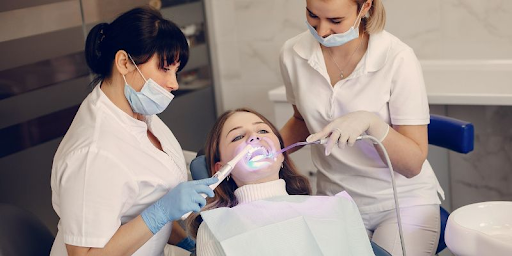Why Wisdom Teeth Cause So Much Pressure and Headache
The dull, throbbing ache that radiates from the back of the mouth can be surprisingly powerful. For many people, it starts as a faint discomfort and slowly builds into something that affects eating, talking, and even sleeping. Few realize that a single tooth — or rather, a latecomer to the mouth — might be responsible for so much pressure and pain.
Wisdom teeth, often the last to appear, have a way of making their presence known. They erupt later in life, usually between the late teens and early twenties, when the jaw is already full and space is limited. That fight for space is what often turns a simple stage of dental growth into days or weeks of tension, swelling, and headaches.
For anyone living with persistent jaw pain or a strange tightening across the temples, understanding why these teeth cause such discomfort can be the first step toward relief. Some people in places like Singapore even turn to professional services for wisdom tooth removal clinics offer, finding lasting comfort and peace once the pressure is gone.
Pressure from Limited Space
A major reason wisdom teeth hurt so much is that they often erupt in a crowded environment. By the time they emerge, most of the permanent teeth have already settled into position, leaving little room at the back of the jaw.
The battle for space
When a wisdom tooth tries to break through where there’s no proper gap, it pushes against neighboring teeth. The pressure builds slowly, spreading through the gums, jawbone, and surrounding muscles. That pushing can create a steady tension that doesn’t just stay at the source — it can radiate upward into the head, becoming what many mistake for a typical tension headache.
The sensation is different from ordinary dental pain because it’s both deep and broad. The roots press against nerves, and that pressure doesn’t stay contained; it travels through nerve pathways connected to the jaw and temples. This is why a problem in the back of the mouth can cause throbbing on one side of the head, or even behind the eyes.
Impacted pain patterns
When a wisdom tooth becomes trapped beneath the gum line or grows at an angle, it’s called impaction. Impacted wisdom teeth often push sideways or downward instead of emerging upright. They can press on nearby roots or the bone itself, creating inflammation that worsens with time.
This inflammation triggers the body’s pain response, often leading to soreness that seems far larger than the size of the tooth causing it. Over time, muscles around the jaw tighten as they try to protect the sore area, which further contributes to that familiar feeling of tightness in the head and neck.
Strain on nearby nerves
Another hidden culprit is nerve irritation. The roots of wisdom teeth can come dangerously close to major nerves in the jaw — including the inferior alveolar nerve, which influences sensation in the lower lip, chin, and teeth. As those teeth shift or swell, they disturb these nerve pathways. The discomfort that follows can mimic the pulsing ache of a migraine, leaving many unsure whether the issue starts in their mouth or their head.
Inflammation and Infection
Beyond the mechanical pressure, wisdom teeth can also cause pain through inflammation and infection. When the tooth only partially breaks through the gum, it creates a small, hard-to-clean pocket where bacteria thrive.
Swelling in the gums
This partial eruption forms what dentists call a “flap” of gum tissue — a small opening that traps food particles and bacteria. Inflammation begins quietly, often with mild swelling or tenderness. As it spreads, the tissue around the wisdom tooth becomes puffy and sensitive, making it hard to chew or even open the mouth wide.
That swelling creates its own internal pressure. Combined with the tension of inflamed muscles, it’s easy to see how this can cause throbbing along the jawline and even contribute to dull headaches. The connectedness of facial muscles means inflammation in the gums can create tension that radiates toward the temples or neck.
The spread of jaw tension
When infection sets in, it often triggers the body’s defensive mechanisms. The immune response floods the area with white blood cells, producing swelling that compresses local nerves. In this small space, that added pressure can feel immense.
People often describe it as if the entire jaw feels “tight.” Muscles like the masseter and temporalis, which handle chewing, tighten and become sore from constant strain. The tension travels upward, leading to a sensation that feels both muscular and neurological — a hallmark of dental-related headaches.
Finding Relief and Long-Term Comfort
Pain from wisdom teeth doesn’t just affect the mouth. It disturbs sleep, concentration, and even posture as people unconsciously adjust their jaw to avoid discomfort. When home remedies like ice packs or over-the-counter pain relief no longer help, professional treatment is often necessary.
Dental specialists in Singapore and other cities commonly recommend examining the position of wisdom teeth early, especially in young adults. Through X-rays and imaging, dentists can determine whether the teeth have enough room to grow properly or if they’re likely to cause problems later. For many, the best path to lasting comfort is extraction under the care of an experienced oral surgeon.
Once the troublesome teeth are removed, pressure dissipates, nerve irritation eases, and related headaches often vanish almost overnight. Many patients are surprised at how much clearer and lighter their head feels just days after recovery. It becomes a turning point — realizing that the discomfort they once thought was normal tension or stress was actually rooted deep in their jaw.
Living with dental pain can subtly drain energy and focus, but relief is more accessible than most assume. A thoughtful evaluation and, if needed, a guided extraction can prevent months or even years of recurring headaches and jaw stiffness. For those considering wisdom tooth removal in Singapore clinics offer experienced care that combines precision with comfort, helping patients move forward pain-free and confident again.
Share this content:














Post Comment